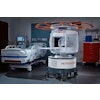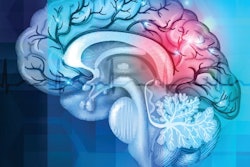Arterial spin labeling MRI shows that alterations in women's cerebral blood flow begin during perimenopause and may be due to an increased burden of white-matter hyperintensities, researchers have reported.
The study results may suggest ways women transitioning through menopause can be supported as their risk of cerebrovascular disease rises, wrote a team led by Wei Guo, PhD, of the Second Affiliated Hospital of Shandong First Medical University in Taian, China. The group's findings were published October 18 in Stroke.
"[Our] findings mark the menopause transition as a unique phase in women's life with altered cerebral perfusion, which may lead to an increased risk of cerebrovascular disease later in life," it wrote.
Changes in brain blood flow increase a person's risk of disease, and women going through menopause may be especially vulnerable, the group noted.
"Altered cerebral hemodynamics, including decreased cerebral blood flow and cerebrovascular reactivity, are associated with an increased risk of cerebrovascular disorders such as cerebral ischemic stroke, cerebral small vessel disease, and neurodegenerative disorders such as Alzheimer disease," it explained. "Given that women during menopause transition are at an increased risk of cerebrovascular diseases and neurodegenerative disorders, it is of clinical relevance to assess cerebral perfusion in this population, and to evaluate the effect of menopause on cerebral perfusion, which in turn can deepen the understanding of physiological changes in the brain of women during menopause transition."
To this end, the team conducted a study that included 185 women who underwent arterial spin labeling MRI between September 2020 and December 2022. Of these, 38 were premenopausal (mean age, 48), 42 were perimenopausal women (mean age, 51), and 42 were postmenopausal women (mean age, 54). The study also included 63 men (mean age, 52).
The group assessed study participants' mean cerebral blood flow values in the following areas:
- Whole brain
- Gray matter
- White matter
- Cortical gray matter
- Subcortical gray matter
- Juxtacortical white matter
- Deep white matter
- Periventricular white matter
Guo and colleagues used the Analysis of Covariance (ANCOVA) metric to compare mean cerebral blood flow among the four participant groups.
The investigators found the following:
- Perimenopausal and postmenopausal women demonstrated a higher proportion of white-matter hyperintensities compared with the other two groups (p < 0.001).
- Premenopausal women exhibited higher cerebral blood flow in the whole brain, gray matter, white matter, and subregions compared with perimenopausal women, postmenopausal women, and men (p ≤ 0.001).
The investigators also reported a connection between menopause status and the interaction between age and menopause status on cerebral blood flow of whole brain, gray matter, and white matter -- except for the deep and periventricular white-matter regions -- with premenopausal women showing a slight increase in cerebral blood flow with age and perimenopausal and postmenopausal women showing declines in cerebral blood flow with age.
"Aging is not the only factor that affects the menopausal brain," corresponding author Weizhao Lu, PhD, told AuntMinnie.com. "Increasing risk of white-matter hypertensities during menopause transition might also affect brain perfusion. Therefore, more attention needs to be paid to women in the menopausal transition period, as well as to some risk factors such as white-matter hyperintensities."
The complete study can be found here.


.fFmgij6Hin.png?auto=compress%2Cformat&fit=crop&h=100&q=70&w=100)





.fFmgij6Hin.png?auto=compress%2Cformat&fit=crop&h=167&q=70&w=250)











